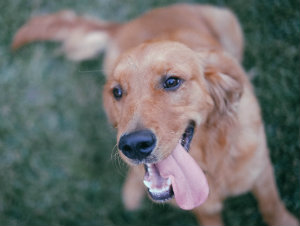09 June 2017
A repeal of the tail docking ban would be a retrograde step for animal welfare in Scotland
BVA, the leading body for vets in the UK, and the Dogs Trust, the UK's largest dog welfare charity, say MSPs on the Environment, Climate Change and Land Reform Committee (ECCLR) have one last chance to protect dogs across Scotland by rejecting the Scottish Government's proposal to reintroduce the painful procedure of tail docking at a vote next Tuesday (13 June).
Tail docking sees puppies less than five days old have their tails amputated with no anaesthetic or pain relief. The World Small Animal and Veterinary Association (WSAVA) places limb amputation in the severe-excruciating pain category, supporting the concern that tail-docking causes pups unnecessary pain and suffering.
The Scottish general public stand opposed to the ban on tail docking being lifted. In a 2016 opinion poll of the Scottish public, carried out by YouGov on behalf of a coalition of animal welfare charities, 71% of those polled believed the ban on docking puppies' tails should be maintained for all dogs.
The Regulations, which will apply to specific breeds of working dog - spaniels and hunt point retrievers - will permit the end-third of puppies' tails to be removed if they are likely to go on to be working dogs.
A survey by Noonan et al (1996) found that 76% of veterinarians believed that tail docking causes significant pain, and no vets believed the procedure was pain free.
President of the British Veterinary Association's Scottish Branch, Melissa Donald, who gave evidence to the ECCLR committee on BVA's position against tail docking, said, “Until now Scotland has led the way on animal welfare in the UK, so we're shocked that the Government would make a proposal that legalises cutting the end off puppies' tails.
"Without an outright ban on tail docking of dogs, we have grave concerns over how enforceability will work – and the life-long impact it will have on the dogs involved.
"Vets, from our evidence-based position, urge the Committee to agree that a ban across all dog breeds must be maintained to avoid a retrograde step for animal welfare in Scotland.”
In a different study, Noonan et al. (1996) looked at the behaviour of puppies during and after the procedure of tail docking. They found that all puppies struggled and shrieked intensely and repeatedly at the time of amputation of the tail.
Dogs Trust's Deputy Veterinary Director, Runa Hanaghan, who also gave evidence to the ECCLR committee at the end of May, commented, "Tail docking involves severing through bone, nerve, muscle, and connective tissue when pups are less than 5 days old, at which point it is very difficult to guarantee they will go on to be working dogs.
"Dogs Trust is deeply concerned that the Scottish Government is proposing to re-introduce this outdated and unnecessary practice.
“The reintroduction – in theory to prevent tail injuries - could see a large number of dogs suffering unnecessary pain. Research by the Royal Veterinary College suggests that up to 500 dogs would need to have their tails docked to prevent one tail injury. This Tuesday is the chance for MSPs to stop this significant step backwards for dog welfare.”
BVA and Dogs Trust are urging MSPs to heed the veterinary profession's science-led opinion, particularly as vets would be responsible for the procedure under the new Regulations.
As well as physical pain involved, removing a dog's tail deprives it of a vital form of expression. The tail is a key way man's best friend communicates with other dogs and with humans, with the tail the most common part of the body used to describe dog behaviour (Tami and Gallagher, 2009).
Where Scotland once led the way with a complete ban on tail docking, to reintroduce this would be a step backwards for dog welfare.
Dogs Trust's Paula Boyden continued, “Dogs Trust is firmly opposed to the historic practice of tail docking, and is calling on MSPs to continue driving forward and leading the way with stronger animal welfare laws to protect our nation's dogs.”
More information on tail docking across the UK, including the Royal College of Veterinary Surgeon's guidance, can be found at www.bva.co.uk/News-campaigns-and-policy/Dog-health-and-welfare/#tail-docking



